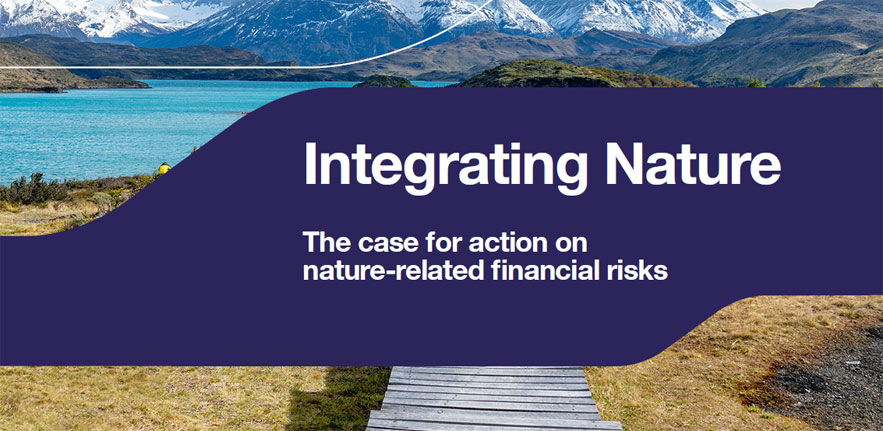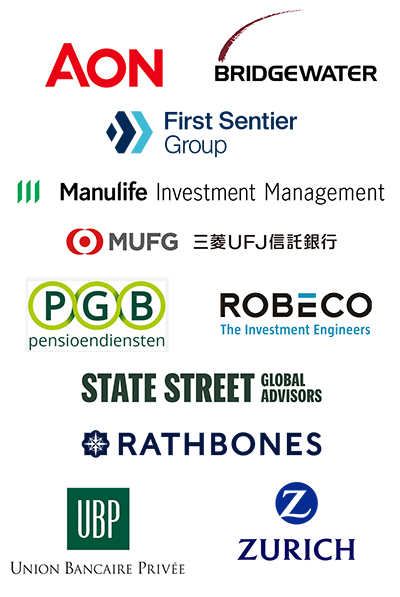- 1 Financial value: ESG-driven capital allocation
- 2 Financial value: engagement
- 3 Non-financial value
- 4 Ethical investment
- 5 Socially responsible investment (SRI)
- 6 Sustainable investment
- 7 Best in class (ESG) investment
- 8 ESG integration
- 9 Thematic investment
- 10 Green investment
- 11 Impact investing
- 12 Shareholder engagement

What is meant by responsible investment?
Responsible investment is an approach to investment that explicitly acknowledges the relevance to the investor of environmental, social and governance factors, and of the long-term health and stability of the market as a whole. It recognises that the generation of long-term sustainable returns is dependent on stable, well-functioning and well-governed social, environmental and economic systems.
In shorthand, this can be interpreted as investment that creates long-term social, environmental and economic (sustainable) value; investment that combines financial and non-financial value creation, or investment that correctly prices social, environmental and economic risk.
To date, assets under management by Principles for Responsible Investment (PRI)[1] signatories now stands at more than US$59 trillion (signaling commitment to responsible investment).
[1] The United Nations-supported Principles for Responsible Investment (PRI) Initiative is an international network of investors working together to put the six Principles for Responsible Investment into practice. Its goal is to understand the implications of sustainability for investors and support signatories to incorporate these issues into their investment decision making and ownership practices.
In implementing the Principles, signatories contribute to the development of a more sustainable global financial system.
Read more about the work of the Investment Leaders Group
What value does responsible investment create?
Three forms of value creation are identified below: financial value from both capital allocation and engagement; and non-financial value.
Financial value: ESG-driven capital allocation
The direct financial value for investors and their beneficiaries/clients created by active ESG strategies may take the form of:
- returns in excess of a benchmark (alpha) – derived in part from the more favourable sustainability exposure of the assets in which the strategy invests
- reduced short-term risk – measured as volatility against a benchmark - as a result of ‘high-ESG’ companies being insulated from earnings shocks and market reactions linked to the internalisation of sustainability costs
- reduced long-term risk - protection against the long-term risk of absolute loss of value – as a result of ‘high-ESG’ companies being strategically better positioned than others.
- lower share price volatility
- a more stable, long-term shareholder base.
All the above result in ‘high-ESG’ companies being better able to develop their businesses. This may generate tangible sustainability benefits if it can be demonstrated, for example, that emissions from these companies and their supply chains and customers fall, resource productivity increases, and so on.
If responsible investment were to reach a sufficient ‘critical mass’, the benefit of lower volatility could be felt across the market as a whole, to the advantage of investors themselves, their clients and beneficiaries, companies and broader society.
Financial value: engagement
The financial value created by engagement may take the form of:
- increased returns or reduced risk as a result of improved sustainability performance by the companies concerned
- improved returns to the market as a whole as a result of internalising externalities.
Non-financial value
The non-financial value created by responsible investment might take the form of:
- improved ESG performance by individual companies such as reduced emissions, fewer human rights breaches, increased job creation, and so on
- improved ESG performance across the market as a whole as a result of policy engagement, for example better corporate disclosure
- more stable markets provided that responsible investment achieves sufficient critical mass.
Read more about the work of the Investment Leaders Group
Forms of responsible investment
The numerous responses of investors to complex, real-world issues often grouped together under the heading of ‘ESG’ are known as responsible investment. A great many other terms are also used to emphasise differences of approach, the most common ones being ethical investment, socially responsible investment, green investment, best in class ESG, ESG integration, thematic investment, impact investment, sustainable investment, and shareholder engagement.
With the exception of shareholder engagement, all forms of responsible investment are, ultimately, to do with portfolio composition: that is, what securities a fund holds. Shareholder engagement (and by extension bondholder engagement) concerns what a fund says to executives or board members of companies in its portfolio or how it acts when it places a representative on a board or how it votes in shareholder assemblies or at bondholder meetings.
Ethical investment
Ethical investment usually refers to negative or exclusionary screening of companies engaged in activities deemed unethical by the investor or that are contrary to certain international declarations, conventions and voluntary agreements. Typical exclusions are alcohol, tobacco, pornography, certain weapons, nuclear power, and gross violations of human rights, or companies doing business in or with a particular country. Exclusions can be based on religion, such as exclusion of companies manufacturing contraceptives or hospitals practicing abortions, or of companies engaged in activities contrary to sharia precepts; or on agreements such as the Universal Declaration of Human Rights, ILO’s Declaration on Fundamental Principles and Rights at Work, Rio Declaration on Environment and Development, and good-practice guidelines from these and numerous other sources.
Socially responsible investment (SRI)
Socially responsible investment (SRI) refers to approaches that apply social criteria and environmental criteria in evaluating companies. Social criteria cover things such as occupational health and safety performance, discriminatory hiring and promotion practices with respect to race or gender, community welfare, labour disputes, and so forth. Environmental criteria cover areas such as quality of environmental management, GHG emissions, energy and resource efficiency, sourcing of raw materials, impacts on natural resources, land and ecosystems, waste and recycling, and are often standardised to company sales. Generally, SRI investors score companies along their chosen criteria, either for their investment universe as a whole or sector by sector; some apply differential sector-specific weightings, and all establish a hurdle for qualification or disqualification within their investment universe. They use this information as a first screen to create a list of ESG-qualified companies which are at the next stage screened and prioritised according to financial information. The resulting list of companies then becomes the universe for composing portfolios. SRI ranking is often combined with best in class active or conviction-based investment strategies, but can also be applied to near-passive investment strategies.
Sustainable investment
Sustainable investment refers to portfolio composition based on the selection of assets that can be defined in some way as being sustainable or possible to continue into the long-term future. If the criteria used are typical ESG issues, then sustainable investment is no different from best in class or integration funds. But if the criteria are defined in terms such as ‘industries of the future’ or ‘net positive business operations’ the investment strategy may be thought of as an advanced mix of thematic and integration approaches. Sustainable investment can also be interpreted as an uncompromising strategy that screens out assets considered to be inimical to long-term environmental and social sustainability. Examples include the majority of fossil energy based industries including tar sands and coal, too-big-to-fail financial institutions, and major investment banks. Examples of social goals such a fund might look for in companies could be those directed at reducing inequalities, providing job security and opportunities for advancement by employees.
Best in class (ESG) investment
Best in class (ESG) investment refers to the composition of portfolios by the active selection of only those companies that meet a defined ranking hurdle established by environmental, social and governance criteria. Typically, companies are scored on a variety of criteria. The score received will depend on how the criteria are weighted, and that can vary sector by sector. Qualified companies will be those that achieve a defined hurdle, for example top 30 per cent, top 50 per cent or another threshold within each sector. A best in class ESG portfolio consists of companies that meet both an ESG screen and a financial screen, generally undertaken by different teams of analysts using their own information and tools. The portfolio manager then composes the portfolio from the list of names that survives the ESG and the financial screens. Best in class portfolios have become quite standard in SRI product offerings because the procedure adapts well to near-passive investment approaches that require low tracking error to one of the traditional broad market indexes. This approach, however, has the drawback of resulting in SRI portfolios that are not much different from business as usual portfolios. In answer to this, some responsible investors are exploring the construction of passive or near-passive portfolios based on custom-designed ESG or sustainability-designed indexes. If such portfolios meet the objectives of their investors at a lower cost than best in class ESG active portfolios, this could become a suitable and perhaps favourable alternative.
ESG integration
ESG integration differs from best in class in that the environmental, social and governance qualities of a company are analysed at a more fundamental level. Ideally, the business model, product strategy, distribution system, R&D, and human resources policies of a company are analysed, attending to those issues the institutional investor and asset manager deem most relevant. Of course, how well-informed, thoroughgoing and trustworthy the ESG analysis is will depend on the background, experience, information sources and values of the analysts. Similarly, the portfolio manager’s values will be revealed by arbitration between short-term positive or negative stock price momentum and longer term positive or negative qualities. How seriously the ESG specialist is taken by the financial analyst and the portfolio manager will also make a difference to a fund's financial and ESG performance.
Thematic investment
Thematic investment refers to the investment strategy of selecting companies that can be classified as falling under a particular investment theme. Examples of themes are water distribution, agriculture, low carbon energy, pollution-control technology, health care, climate change and information technology. Though similar to sector investing, thematic funds tend to cover a variety of sectors and pick companies within these sectors that are relevant to the theme. Thus a health care fund might invest in pharmaceutical companies, hospital companies, health insurance companies, nursing homes, surgical equipment manufacturers and hi-tech and infotech companies that support any of the former. The degree to which a thematic fund would qualify as an SRI fund would depend not only on the theme but also the environmental and social attributes and impacts of companies in the fund. From a performance point of view, the greater sector diversification of thematic funds makes them less subject to over- and under-performance than green investment funds.
Green investment
Green investment refers to approaches that seek to invest capital in ‘green’ assets, whether these are funds, companies, infrastructure, projects and so on. Typically this might include low carbon power generation and vehicles, smart grids, energy efficiency, pollution control, recycling, waste management and waste of energy, process innovation, and other technologies and processes that contribute to solving particular environmental problems. Green investment can thus be subsumed within thematic investing (see below). From a performance point of view, such funds are subject to similar over- and under- performance characteristics as sector funds generally – they may do extremely well for a period, then not, often determined by the vagaries of politics, subsidies, or regulations in different countries. Witness the rollercoaster ride of solar and wind turbine manufacturers during the past ten years.
Impact investing
Impact investing refers to investments seeking a particular social or environmental objective, such as to provide employment in a community, promote access to low carbon energy, or support minority-owned businesses or businesses that employ people recovering from drug addiction or with disabilities. Making sure that the investment achieves its defined impact, and measuring and tracking its progress lie at the heart of the investment proposition. Impact investment should not be confused with philanthropy, its purpose still being to meet the financial objectives of the investor. Impact investment usually takes the form of investing in non- listed companies and is not determined by sector or theme. It is an increasingly popular model for socially conscious high net worth individuals.
Shareholder engagement
Shareholder engagement refers to the influence brought about by shareholders in a corporation's decisions on matters of ESG either through dialogue with corporate officers, the submission of questions or proposals for action at shareholder assemblies, and the consequent way in which they vote. Its justification as an alternative to all the above-mentioned approaches to responsible investment is the fact that what counts on the ground is getting companies to act more responsibly. The efficacy of engagement relates closely to the scale of ownership of the investor in the target company, and its perceived market power. It is one thing for a niche green mutual fund to push for change, quite another when a major ‘universal owner’ conveys an interest, particularly if the ultimate sanction, divestment, is known to be at its disposal.
Read more about the work of the Investment Leaders Group
Content taken from The Value of Responsible Investment: The moral, financial and economic case for action.









